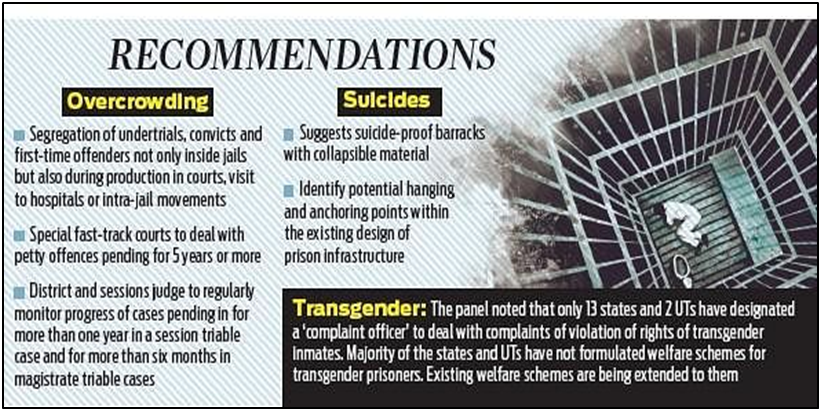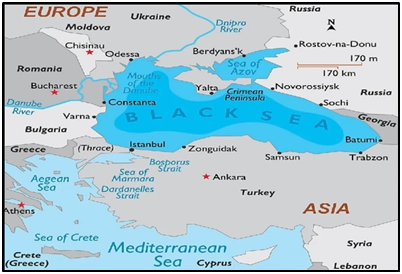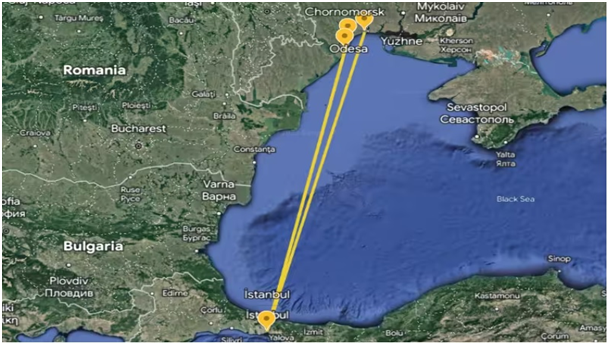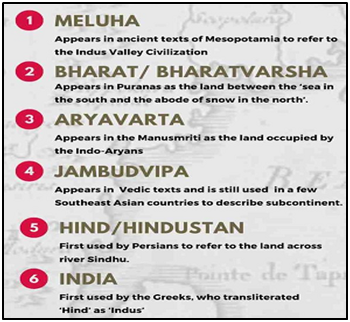Justice Amitava Roy Committee
06-09-2023
11:28 AM

What’s in Today’s Article?
- Why in News?
- About Justice Amitava Roy Committee
- Major Findings of the Amitava Roy Committee
- Recommendations made by the Amitava Roy Committee

Why in News?
- Recently, the Supreme Court sought views of the Central and the State Governments on the Justice Amitava Roy Committee report.
About Justice Amitava Roy Committee:
- In September 2018, the Supreme Court had formed a Committee on Prison Reforms chaired by former judge, Justice Amitava Roy.
- Purpose – To examine the various problems plaguing prisons in the country, from overcrowding to lack of legal advice to convicts to issues of remission and parole.
- The decision was taken based on a letter from former Chief Justice of India R.C. Lahoti highlighting the overcrowding in prisons, unnatural deaths of prisoners, gross inadequacy of staff and the lack of trained staff.
- Objectives of the Committee –
- Examine the extent of overcrowding in prisons and correctional homes & recommend remedial measures;
- Availability of legal aid and advice;
- Grant of remission, parole and furlough;
- Reasons for violence in prisons and correctional homes;
- Recommend measures to prevent unnatural deaths and assess the availability of medical facilities in prisons and correctional homes.
- The court asked the committee to complete the collection of data and information and submit the report in a year.
- The committee submitted the final report in December, 2022.
Major Findings of the Committee:
- Crowding among Undertrials –
- Prisons in India are teeming with people waiting for the completion of trial or investigation, also called undertrials.
- Globally, one in three prisoners are undertrials. In India, three out of four, or about 77% of the total prison population in 2021, were undertrials.
- Conditions of Female Prisoners –
- Women prisoners face far worse conditions than men in terms of access to basic facilities.
- The report said that prisons only in Goa, Delhi and Puducherry allow female inmates to meet their children without any bars or glass separation.
- Less than 40% prisons provide sanitary napkins to female inmates.
- Only 18% of female prisoners get exclusive women’s prison facilities, and functional women’s prisons exist in just 15 states and union territories.
- Condition of Transgender Prisoners –
- Prison authorities of only 13 states and two Union Territories have designated a ‘complaint officer’ to deal with complaints of violation of rights of transgender inmates in prisons.
- Majority of the states and Union Territories have not formulated welfare schemes for transgender prisoners.
- Number of Suicide Cases –
- Suicide is a major cause of the 817 unnatural deaths reported in jails across the country between 2017 and 2021.
- out of the 817 unnatural deaths, 660 were suicides with Uttar Pradesh recording the highest number of suicides at 101 during this period.
Recommendations made by the Committee:
- Reduce Violence amongst Prisoners –
- The Committee on Prison Reforms has recommended mandatory segregation of undertrials, convicts and first-time offenders inside jails, while producing them in courts, during their hospital visits, etc.
- Prison administration should strive to comprehensively implement national and state health insurance schemes such as the Ayushman Bharat scheme, Chiranjeevi Health Insurance Scheme and similar state health insurance schemes in prisons.
- It further suggested the need for a robust grievance redressal mechanism for the prisoners for registering their complaints.
- Speedy Trials –
- The issue of overcrowding lies majorly with the undertrial population in prisons.
- The committee recommends that special fast track courts to be set up to extensively deal with petty offences and for cases pending for five years or more.
- The committee has recommended tasking district and sessions judge with the responsibility of regularly monitoring the progress of cases pending in courts where the accused is in custody for more than one year in a session triable case and for more than six months in magistrate triable cases.
- Use of Video Conferencing as a Medium –
- The committee has recommended that as far as possible, production of senior citizens and sick prisoners in courts should be done through video-conferencing medium.
- Prevention of Suicide–
- Against an increase in cases of suicide by hanging, the panel while calling death in prisons as one of the worst violations of human recommended or suicide-proof barracks with collapsible material.
- The committee said the jail staff should be regularly provided the requisite training to recognise "signs of depression and aberrant behaviour".
Q1) In which Subject of the 7th Schedule does Prison and its Administration listed?
Prisons, and their administration, is a state subject covered by item 4 under the State List in the Seventh Schedule of the Constitution of India.
Q2) What is the purpose of Judicial Custody?
In Judicial Custody, the suspect becomes the responsibility of the Court. it opines the interrogation being necessary under the facts produced before the court. The provisions for holding a person in custody for the purpose of furthering investigation in India are governed by Section 167 of the Code of Criminal Procedure.
Source: Jail reforms: SC panel moots sweeping changes | Hindu

Justice Amitava Roy Committee
Central Bank Digital Currency - UPI QR Code
06-09-2023
11:28 AM

What’s in today’s article?
- Why in news?
- What is Central Bank Digital Currency (CBDC)?
- News Summary: UPI QR Code-Central Bank Digital Currency interoperability
- What is UPI QR code-CBDC interoperability?
- How will it benefit customers and merchants?
- What is a QR code?
- How will interoperability help in increasing CBDC adoption?
Why in news?
- Banks are enabling the interoperability of Unified Payments Interface’s (UPI) Quick Response (QR) code with their central bank digital currency (CBDC) or e₹ application.
- Interoperability is the technical compatibility that enables a payment system to be used in conjunction with other payment systems.
- It allows system providers and participants in different systems to undertake, clear and settle payment transactions across systems without participating in multiple systems.
- With this, users of retail digital rupee will be able to make transactions by scanning any UPI QR at a merchant outlet.
- Merchants can also accept digital rupee payments through their existing UPI QR codes.
- This integration of UPI and CBDC is part of the Reserve Bank of India’s (RBI) ongoing pilot project on pushing the retail digital rupee (e₹-R).

What is Central Bank Digital Currency (CBDC)?
- About
- CBDC is the legal tender issued by a central bank in a digital form.
- The digital rupee (e-Rupee) is the digital currency launched by Reserve Bank of India.
- It is the same as a fiat currency and is exchangeable one-to-one with the fiat currency, only its form is different.
- CBDC is the legal tender issued by a central bank in a digital form.
- Launch of Digital Rupee
- RBI has demarcated the digital rupee into two broad categories: general purpose (retail) and wholesale.
- This demarcation is based on the usage and the functions performed by the digital rupee and considering the different levels of accessibility.
- From November 1, 2022, RBI launched its first pilot project to use digital rupee in the wholesale market for secondary trade in government securities (G-secs).
- Wholesale CBDC has the potential to transform the settlement systems for financial transactions undertaken by banks in the government securities (G-Sec) segment, inter-bank market and capital market more efficient and secure in terms of operational costs, use of collateral and liquidity management.
- From December 1,2022, retail digital rupee (e-R) pilot was launched.
- In effect, the retail e-rupee is an electronic version of cash, and will be primarily meant for retail transactions.
- It is available for use by all — the private sector, non-financial consumers and businesses.
- It will be distributed through intermediaries, i.e., banks.
- It will not earn any interest and can be converted to other forms of money, like deposits with banks.
- RBI has demarcated the digital rupee into two broad categories: general purpose (retail) and wholesale.
News Summary: UPI QR Code-Central Bank Digital Currency interoperability
What is UPI QR code-CBDC interoperability?
- Interoperability of UPI with the digital rupee means all UPI QR codes are compatible with CBDC apps.
- Initially, when the pilot for the retail digital rupee was launched, the e₹-R users had to scan a specific QR code to undertake transactions.
- However, with the interoperability of the two, payments can be made using a single QR code.
- The e₹ is held in a digital wallet, which is linked to a customer’s existing savings bank account.
- UPI is directly linked to a customer’s account.
How will it benefit customers and merchants?
- The interoperability of UPI and CBDC will ensure seamless transactions between a customer and merchant without having the need to switch between multiple digital platforms.
- It will allow a digital rupee user to make payments for their daily needs, such as groceries and medicines, by scanning any UPI QR codes at any merchant outlet.
- Even merchants are not required to keep a separate QR code to accept the digital rupee payments. They can accept CBDC payments on their existing QR code.
- If the merchant has a CBDC account, the payment will be settled in the CBDC wallet.
- If a merchant does not have a CBDC account, then there will be an option to make payment using UPI.
What is a QR code?
- A Quick Response (QR) code consists of black squares arranged in a square grid on a white background, which can be read by an imaging device such as a camera.
- It contains information about the item to which it is attached.
- QR code is an alternate contactless channel of payments. It allows merchants or businesses to accept payments from their customers directly into their bank accounts.
How will interoperability help in increasing CBDC adoption?
- Currently, UPI is a widely used payment method, and the interoperability between it and the CBDC will propel the adoption of the digital rupee.
- At present, more than 70 mobile apps and over 50 million merchants accept UPI payments.
- In July, RBI Deputy Governor said there were 1.3 million customers and 0.3 million merchants using the retail digital rupee.
- The daily per-day e₹-R transactions in July were around 5,000-10,000.
- The seamless integration of CBDC with UPI will enhance the acceptance and utilization of digital currencies in everyday transactions.
Q1) What are government securities?
Government securities, often referred to as government bonds or treasuries, are debt instruments issued by a government to raise funds. These securities are essentially loans that individuals, institutions, and foreign governments provide to the issuing government. In return, the government promises to pay back the principal amount (the initial investment) at a specified maturity date and usually pays periodic interest payments to the bondholders.
Q2) What is Unified Payments Interface (UPI)?
The Unified Payments Interface (UPI) is a real-time payment system and digital payments platform in India. It was developed by the National Payments Corporation of India (NPCI) to facilitate easy and instant interbank transactions and promote digital payments. UPI has become one of the most popular and widely used payment methods in India, revolutionizing the way people transfer money, make payments, and conduct financial transactions.

Central Bank Digital Currency - UPI QR Code
Black Sea Grain Deal
06-09-2023
11:28 AM

What’s in today’s article?
- Why in news?
- What is the Geographical location of Black Sea?
- What is Black Sea grain deal?
- Why did Russia refuse to renew it?
- What has happened since the deal came to an end?
Why in news?
- Turkish President Tayyip Erdogan said he was confident Russia would soon revive the Black Sea grain deal.
- This statement came after Erdogan held talks with Putin at the Russian Black Sea resort of Sochi.
- This deal was signed in July 2022 and assured safe passage to ships carrying grain from Ukraine.
- In July 2023, Russia refused to extend the deal. Since then, Turkey has repeatedly pledged to renew it to help avoid a food crisis in parts of Africa, the Middle East and Asia.
- Russia’s President Vladimir Putin, however, said the deal will not be restored until the West meets its obligations to facilitate Russian agricultural exports.

Geographical location of Black Sea
- The Black Sea lies between the continents of Asia and Europe.
- It is bound to the west by the Balkan Peninsula, to the east by the Caucasus, north by East European Plains, and south by Anatolia of Western Asia.
- It is bordered by Ukraine to the north, Russia to the northeast, Georgia to the east, Turkey to the south, and Bulgaria and Romania to the west.
- The black Sea drainage basin drains several countries, including the six countries that share its coast.
What is Black Sea grain deal?
- Background
- Ukraine is among the world’s biggest exporter of foodgrains, such as wheat and corn, and a major contributor to the UN’s food aid programmes.
- When Russia invaded the country and blockaded its ports, it sent food prices soaring and raised fears of food security in the poorer nations of the world.
- Pakistan, for instance, saw wheat prices skyrocket to crisis levels.
- Against this backdrop, the UN and Turkey got Russia to agree to the Black Sea Grain Initiative.
- About
- In July 2022, Russia and Ukraine signed a deal to reopen grains exports from Ukrainian Black Sea ports.
- The agreement is also known as the Black Sea Initiative.
- Under the initiative, cargo ships would be allowed to travel from and to three Ukrainian ports of Odesa, Chornomorsk and Pivdennyi (Yuzhny), after inspection that they weren’t carrying arms.
- The safe passage in the Black Sea was 310 nautical miles long and three nautical miles wide.
- A control centre was established in Istanbul, staffed by U.N., Turkish, Russian and Ukrainian officials, to run and coordinate the process.
- The deal has been extended twice, and expired on July 17.
- Significance of this deal:
- It brought relief for developing countries on the edge of bankruptcy and the most vulnerable people on the edge of famine.
- The United Nations says ripple effects of the war could increase the number of people facing severe food insecurity by 47 million.
- It also helped stabilize global food prices which were already at record levels even before the war.
- Ukraine is one of the world's largest exporters of wheat, corn and sunflower oil, but Russia's invasion of the country and naval blockade of its ports have halted shipments.
- Some grain is being transported through Europe by rail, road and river, but the prices of vital commodities like wheat and barley have soared.
- It brought relief for developing countries on the edge of bankruptcy and the most vulnerable people on the edge of famine.
Why did Russia refuse to renew it?
- Russia claimed that the promises made to it under the deal have not been met, and it is still facing trouble exporting its own agricultural products and fertilisers.
- There is no direct restriction on Russia’s agricultural products.
- However, barriers on payment platforms, insurance, shipping and other logistics are hampering its exports.
- Russia also said that it had agreed to the grain deal in order to help ensure global food security, but Ukraine has since exported mainly to high-and middle-income countries.
What has happened since the deal came to an end?
- Since its refusal to extend the end, Moscow has repeatedly attacked the Odesa region, which is Ukraine’s main Black Sea port.
- Russia is also looking to export grain to African nations.
- Moscow is close to a deal with six African countries over a plan to supply Burkina Faso, Zimbabwe, Mali, Somalia, the Central African Republic and Eritrea with up to 50,000 tonnes of grain.
Q1) What is Balkan Peninsula?
The Balkan Peninsula, often referred to as the Balkans, is a geographical and historical region in Southeastern Europe. It is located in the eastern part of the European continent and is bordered by the Adriatic Sea to the west, the Mediterranean Sea to the south, the Aegean Sea to the southeast, and various countries to the north and east.
Q2) What is Caucasus region?
The Caucasus region is a mountainous area located at the intersection of Eastern Europe and Western Asia, between the Black Sea and the Caspian Sea. It is named after the Caucasus Mountains, which span the region and form a natural border between Europe and Asia. The Caucasus region is culturally, ethnically, and geographically diverse, with a rich history and complex geopolitical dynamics.
Source: Black grain deal will be restored ‘soon’, says Turkey’s Erdogan: What is the agreement; its significance | The Hindu | Indian Express

Black Sea Grain Deal
Name of the Nation - India or Bharat
06-09-2023
11:28 AM

What’s in Today’s Article?
- Why in News?
- A Short History of the Nation’s Names
- How did ‘Bharat’ and ‘India’ Come into the Constitution of India?
- Recent Attempts of Name Change of the Nation
Why in News?
- Opposition politicians have been posting images of an official invitation to a G20 dinner hosted by “The President of Bharat” instead of the usual “President of India”.
- There is speculation of an official change in the name of the country from India to Bharat, even though Article 1 of the Constitution uses the two names interchangeably: “India, that is Bharat, shall be a Union of States.”

A Short History of the Nation’s Names:
- Bharat:
- The roots of “Bharat”, “Bharata”, or “Bharatvarsha” are traced back to Puranic literature, and to the epic Mahabharata.
- The Puranas describe Bharata as the land between the sea in the south and the abode of snow in the north.
- Social scientists explained Bharata/ the remote past in the sense of a religious and socio-cultural entity [A unity of a common faith and culture - Jawaharlal Nehru], rather than a political or geographical one.
- ‘Bharata’ refers to the subcontinental territory where the Brahmanical system of society prevails.
- Bharata is also the name of the ancient king of legend who was the ancestor of the Rig Vedic tribe of the Bharatas, and by extension, the progenitor of all peoples of the subcontinent.
- Hindustan:
- The name Hindustan is thought to have derived from ‘Hindu’, the Persian equivalent form of the Sanskrit ‘Sindhu’ (Indus), which came into currency with the Persian conquest of the Indus valley that began in the 6th century BC.
- By the time of the early Mughals (16th century), the name ‘Hindustan’ was used to describe the entire Indo-Gangetic plain.
- In the mid-to-late eighteenth century, Hindustan often referred to the territories of the Mughal emperor, which comprised much of South Asia.
- India:
- The Greeks used ‘Indus’ in place of ‘Sindhu/Hindu’. By the time the Macedonian king Alexander invaded India in the 3rd century BC, ‘India’ had come to be identified with the region beyond the Indus.
- From the late 18th century onwards, British maps increasingly began to use the name ‘India’, and ‘Hindustan’ started to lose its association with all of South Asia.
- Part of the appeal of the term India may have been its Graeco-Roman associations, its long history of use in Europe, and its adoption by scientific and bureaucratic organisations such as the Survey of India.
- The adoption of India suggests how colonial nomenclature helped to usher in an understanding of the subcontinent as a single, bounded and British political territory.
How did ‘Bharat’ and ‘India’ Come into the Constitution of India?
- In his ‘Discovery of India’, Nehru referred to “India”, “Bharata” and “Hindustan”, but when the question of naming India in the Constitution arose, ‘Hindustan’ was dropped and both ‘Bharat’ and ‘India’ were retained.
- During the Constituent Assembly debates the “Name and territory of the Union” was taken up for discussion on September 17, 1949.
- Right from the time Article 1 was read out as “India, that is Bharat, shall be a Union of States”, a division arose among the members.
- There were quite a few members who were against the use of the name ‘India’, which they saw as being a reminder of the colonial past.
- HV Kamath suggested that the first article should read, “Bharat, or in the English language, India, shall be…”.
- Hargovind Pant, who represented the hill districts of the United Provinces, made it clear that the people of Northern India “wanted Bharatvarsha and nothing else”.
- None of the suggestions were accepted, illustrating contrasting visions of the budding nation.
- The draft Article 1 of the Constitution - “India, that is Bharat, shall be a Union of States” - was adopted by the Constituent Assembly on September 18, 1949.
- The five-day special session of Parliament starts on September 18, 2023, and this fuelled speculation of an official change in the name of the country from India to Bharat, especially among Opposition parties.
Recent Attempts of Name Change of the Nation:
- In 2020, the Supreme Court had dismissed a PIL seeking to remove “India” from the Constitution and retain only Bharat in order to ensure the citizens of this country get over the colonial past.
- The apex court held that “India is already called Bharat in the Constitution itself.”
- In his Independence Day address (2022), the Indian PM had spoken about the “Panch Pran”, stressing the need to decolonise minds and taking pride in India’s civilisational heritage.
- A government booklet on the Indian PM’s upcoming visit to Indonesia for the 20th ASEAN-India Summit and the 18th East Asia Summit referred to him as the “Prime Minister of Bharat”.
Q1) What is the Indus Valley Civilization?
Indus valley civilization or Harappan civilization is the earliest known urban culture of the Indian subcontinent. The nuclear dates of the civilization appear to be about 2500–1700 BCE, though the southern sites may have lasted later into the 2nd millennium BCE.
Q2) What is Part I of the Indian Constitution?
Part I (The Union and its territories) is a compilation of laws pertaining to the constitution of India as a country and the union of states that it is made of. This part contains four Articles (1 to 4).
Source: India, that is Bharat: A short history of the nation’s names, from the Rig Veda to the Constitution of India | IE





